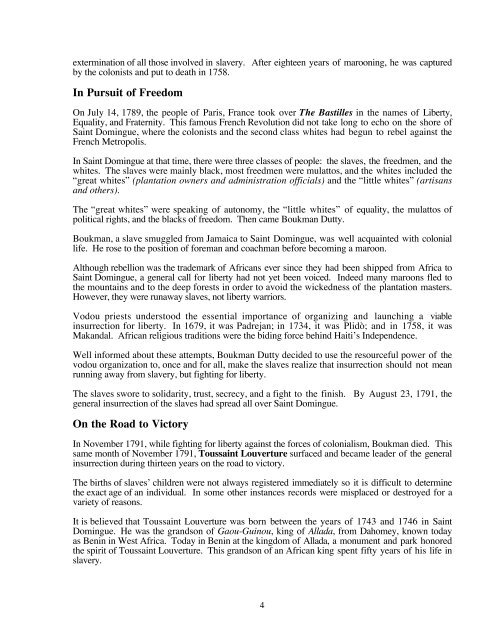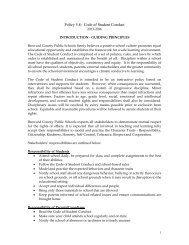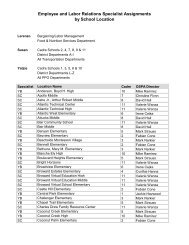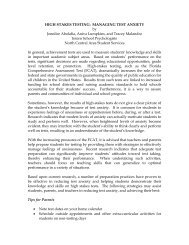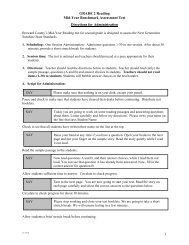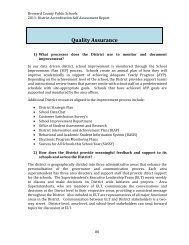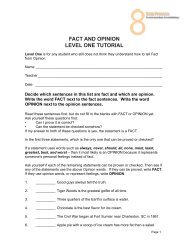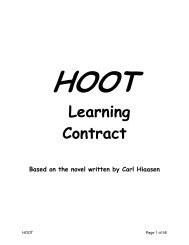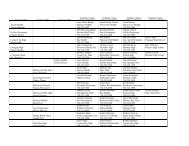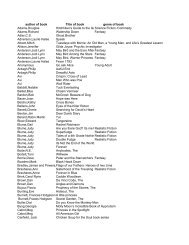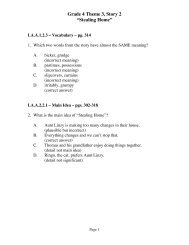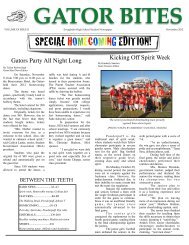Haitian Culture Curriculum Guide
Haitian Culture Curriculum Guide
Haitian Culture Curriculum Guide
You also want an ePaper? Increase the reach of your titles
YUMPU automatically turns print PDFs into web optimized ePapers that Google loves.
extermination of all those involved in slavery. After eighteen years of marooning, he was captured<br />
by the colonists and put to death in 1758.<br />
In Pursuit of Freedom<br />
On July 14, 1789, the people of Paris, France took over The Bastilles in the names of Liberty,<br />
Equality, and Fraternity. This famous French Revolution did not take long to echo on the shore of<br />
Saint Domingue, where the colonists and the second class whites had begun to rebel against the<br />
French Metropolis.<br />
In Saint Domingue at that time, there were three classes of people: the slaves, the freedmen, and the<br />
whites. The slaves were mainly black, most freedmen were mulattos, and the whites included the<br />
“great whites” (plantation owners and administration officials) and the “little whites” (artisans<br />
and others).<br />
The “great whites” were speaking of autonomy, the “little whites” of equality, the mulattos of<br />
political rights, and the blacks of freedom. Then came Boukman Dutty.<br />
Boukman, a slave smuggled from Jamaica to Saint Domingue, was well acquainted with colonial<br />
life. He rose to the position of foreman and coachman before becoming a maroon.<br />
Although rebellion was the trademark of Africans ever since they had been shipped from Africa to<br />
Saint Domingue, a general call for liberty had not yet been voiced. Indeed many maroons fled to<br />
the mountains and to the deep forests in order to avoid the wickedness of the plantation masters.<br />
However, they were runaway slaves, not liberty warriors.<br />
Vodou priests understood the essential importance of organizing and launching a viable<br />
insurrection for liberty. In 1679, it was Padrejan; in 1734, it was Plidò; and in 1758, it was<br />
Makandal. African religious traditions were the biding force behind Haiti’s Independence.<br />
Well informed about these attempts, Boukman Dutty decided to use the resourceful power of the<br />
vodou organization to, once and for all, make the slaves realize that insurrection should not mean<br />
running away from slavery, but fighting for liberty.<br />
The slaves swore to solidarity, trust, secrecy, and a fight to the finish. By August 23, 1791, the<br />
general insurrection of the slaves had spread all over Saint Domingue.<br />
On the Road to Victory<br />
In November 1791, while fighting for liberty against the forces of colonialism, Boukman died. This<br />
same month of November 1791, Toussaint Louverture surfaced and became leader of the general<br />
insurrection during thirteen years on the road to victory.<br />
The births of slaves’ children were not always registered immediately so it is difficult to determine<br />
the exact age of an individual. In some other instances records were misplaced or destroyed for a<br />
variety of reasons.<br />
It is believed that Toussaint Louverture was born between the years of 1743 and 1746 in Saint<br />
Domingue. He was the grandson of Gaou-Guinou, king of Allada, from Dahomey, known today<br />
as Benin in West Africa. Today in Benin at the kingdom of Allada, a monument and park honored<br />
the spirit of Toussaint Louverture. This grandson of an African king spent fifty years of his life in<br />
slavery.<br />
4


